Understanding Name-Based Personalization
Published on March 28, 2025/Last edited on March 28, 2025/11 min read
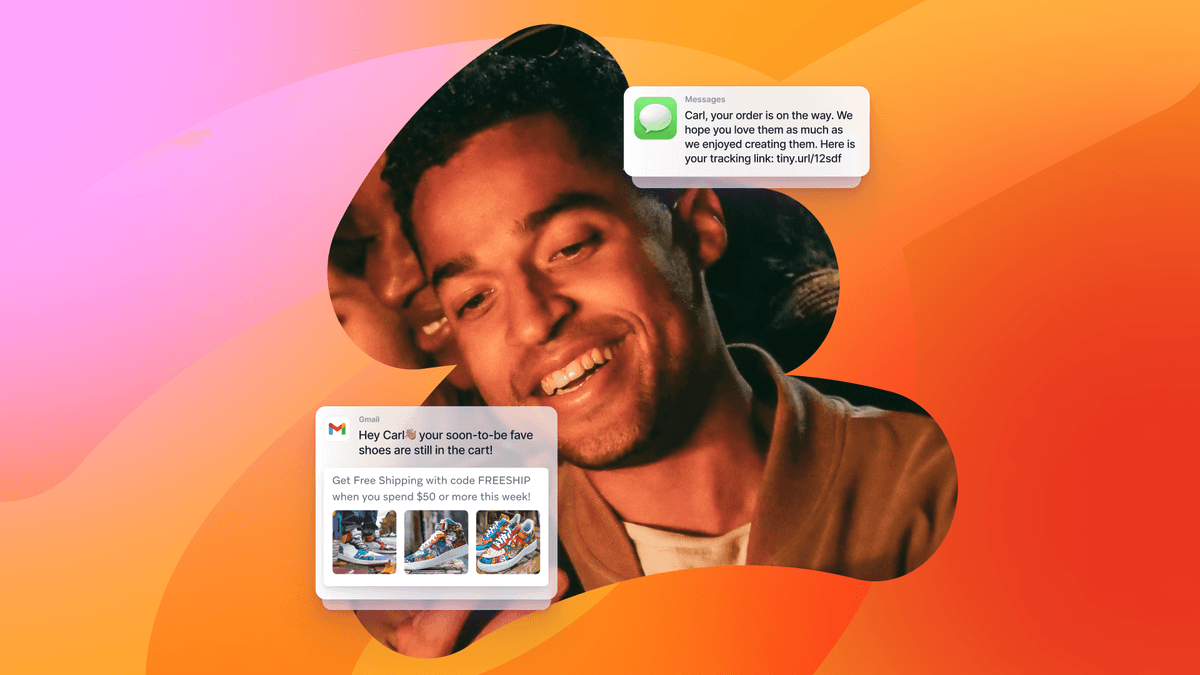

Team Braze
Whether that’s simple personalization by name or more advanced tailored content, brands are using what they know about us to create more customized email marketing.
As a marketer, you’re on both sides of this. You’ve probably cringed at badly personalized emails that you’ve received yourself (Hello, First Name!), while working out how to do it better in your own marketing.
Let’s take this opportunity to dig a little deeper into personalization and how to use it in your outreach in ways that add value to your customers’ lives. Plus, how to extend personalization beyond email and into a seamless, personalized, cross-channel approach.
What is personalization?
Personalization is about using what you know about your customers to provide them with better experiences. When a brand customizes the outreach that it sends based on the individual who will be receiving it, that’s personalization.
It’s about using customer data—whether that’s information gleaned through how they interact with your website and app or zero-party data they’ve volunteered—to tailor the content and communications you send to them.
That might be as simple as including their name in your emails, or it could be more advanced personalization, such as curated content suggestions, sending messages on the channel a customer prefers most, or even an entire customer journey that’s tailored to each individual.
Getting started with personalization
What is name-based personalization?
Name-based personalization is exactly what it sounds like. It’s addressing a customer by their name, creating an individually customized experience that lets them know your message is indeed intended for them.
By pulling customer names from your audience profiles and adding them to emails, push notifications, in-app messages, or entire cross-channel experiences and more, you can demonstrate to the recipients of your outreach that you know who they are and that they’re real people to you, not just faceless, nameless users.
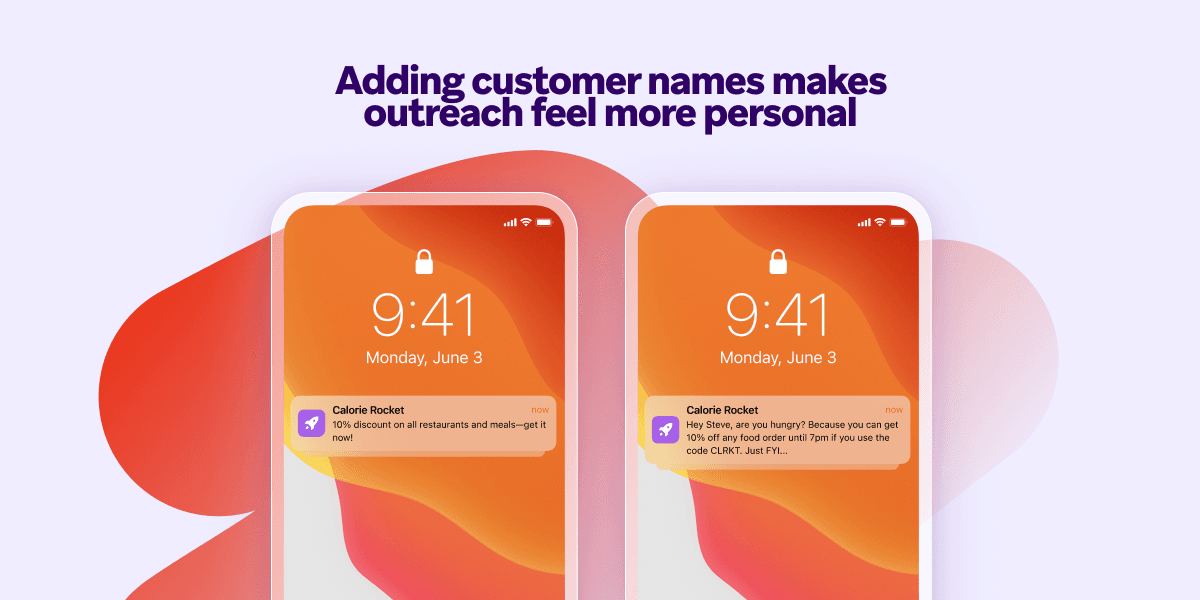
How to execute name-based personalization
As with other forms of personalization, name personalization is all about taking advantage of data. Once you obtain name data, with Braze, you’d likely use Liquid personalization to take advantage and create a spot within your campaign copy where each and every recipient’s first name is dynamically inserted when the message is sent.
In practice, the effect can be as straightforward as opening the message with a greeting that includes a customer’s name—such as “Hi James” vs. “Hi Valued Customer—and can have the effect of starting to build lasting relationships.
Beyond personalized names: Advanced opportunities
While personalizing messaging with your customers’ names is a great first step, it’s just that—the first step. More advanced forms of personalization can take things further in helping to build relationships that support higher customer engagement, retention, and monetization in the long-term.
Let’s take a look at other ways you can personalize your marketing outreach.
Events and attributes
By personalizing your messages based on customer attributes, like age, gender, or favorite color, and events, like whether they’ve made a purchase or abandoned a shopping cart, allows you to tailor your outreach to each individual. By leveraging this knowledge about your customers and their interactions with your brand, you can create more impactful and relevant communications that are designed to resonate with them on a personal level. This targeted approach not only enhances engagement but also strengthens your relationship with each customer.
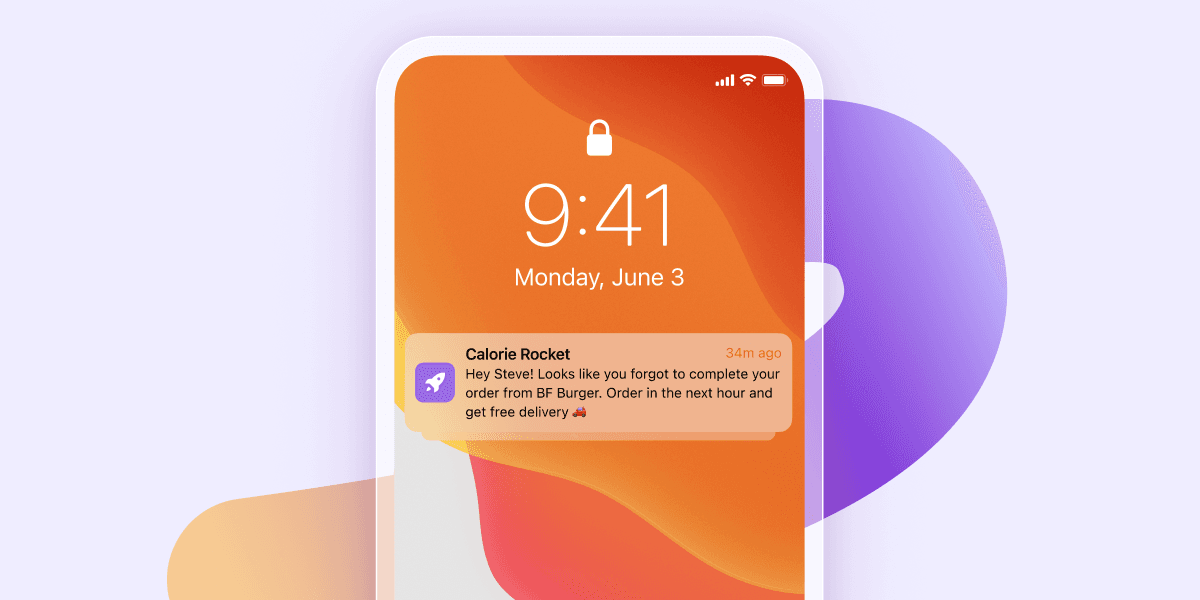
Location
Personalizing your campaigns based on each customer’s location makes it possible to craft outreach that’s specific to recipients in individual countries, cities, or even neighborhoods. That makes it easy to build relevance and demonstrate usefulness as customers receive messages that are relevant to where they actually live, work, and shop.
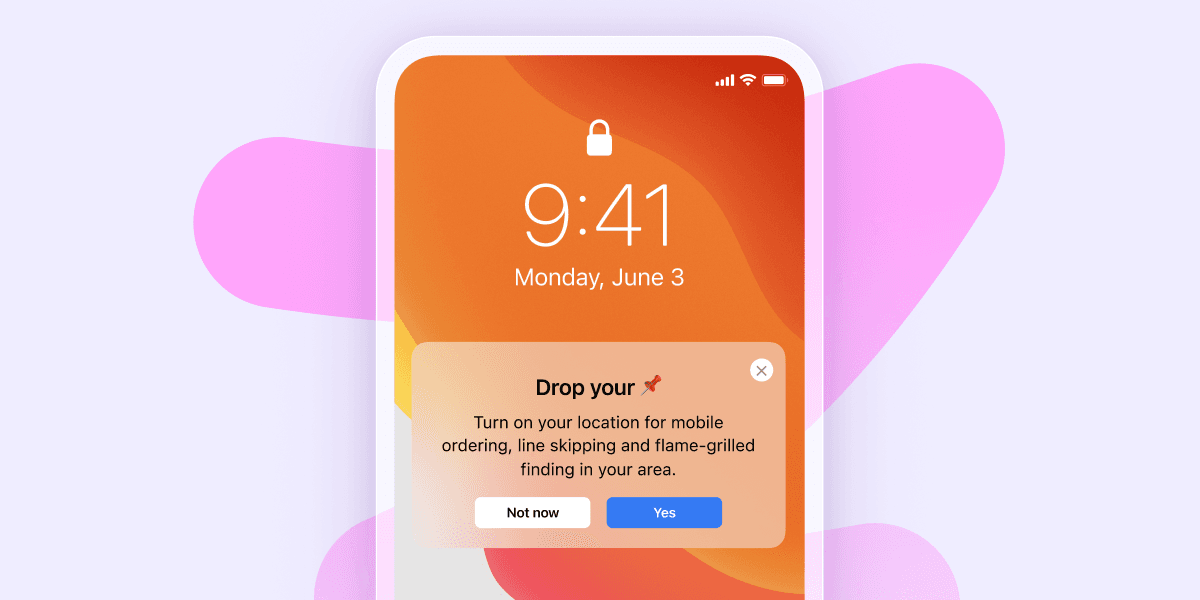
Language
Language-based personalization lets you send a single campaign that adjusts to match the preferred language of each recipient, which sure beats creating 15 or more campaigns for every message, or worse, sending messages in a language your customers don’t speak.
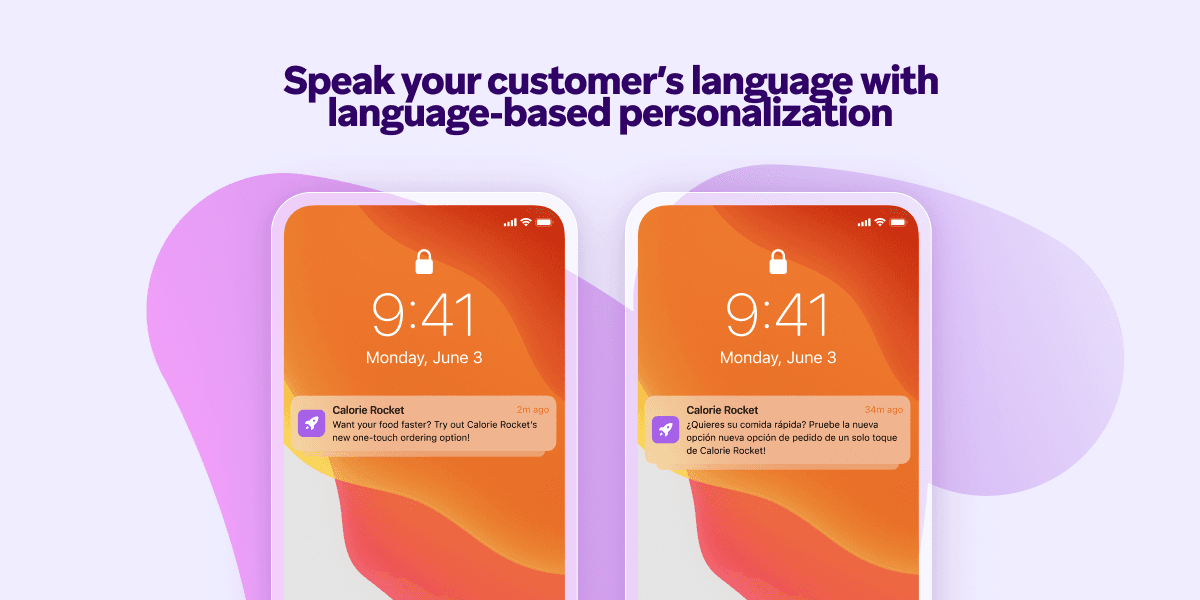
Dynamic content
By using dynamic content to individually customize messages, you can send campaigns that are relevant and engaging for each individual customer—at scale. For example, you can use Catalogs, a powerful tool that enables you to leverage your brand's unique data on the goods, products, or services you offer to enhance customer experiences and campaigns. This tool allows you to personalize various aspects of your outreach, such as sending tailored cart abandonment reminders, providing 1:1 product recommendations, promoting new items in your inventory, or highlighting items that are currently on sale. By utilizing Catalogs, you can drive more relevant and engaging interactions with your customers.
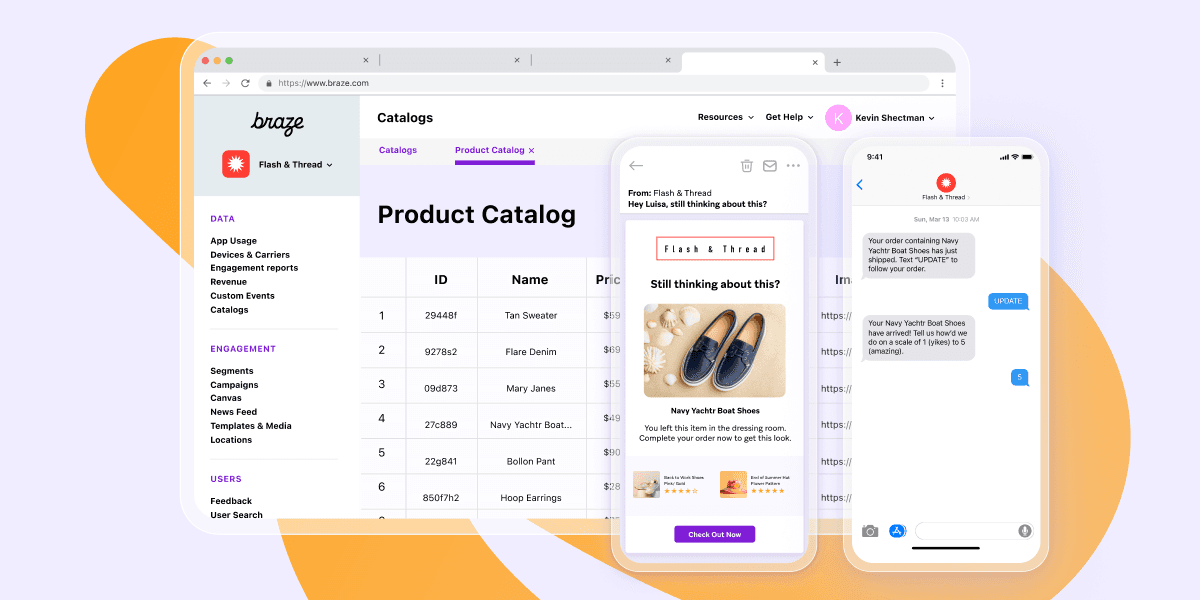
Delivery time
This one’s a little different. Delivery time personalization uses data about each recipient’s engagement with previous outreach so that customers receive your message at the time when they’re most likely to engage. You can even use intelligent timing features to send messages when customers are most likely to engage with them.
Okay, but what are customer attributes and events, anyway?
Customer attributes and events are pieces of data that inform your understanding of your audience and their behavior. And while customer attributes and customer events both play a major role in this type of personalization, they are distinct—if complementary—types of information and should be understood as such.
Customer attributes
A customer attribute is data about who a customer is as an individual. For instance:
- What language do they speak?
- What time zone are they in?
- When is their birthday?
Customer events
A customer event provides information about customer behavior or actions within your app, on your website, or with your other channels. For instance:
- Have they abandoned a shopping cart?
- Have they watched your app’s onboarding tutorial video?
- Have they rated your app?
Together, customer events and attributes can give marketers a vivid picture of each customer and the ways they’re engaging with your app, website, and brand.
Event properties
Think about it this way: while customer events are designed to provide general information about a customer’s behavior, like whether they’ve abandoned a shopping cart, customer event properties provide an additional layer of data on those events, such as the dollar value of the shopping cart or the item they abandoned.
Having this additional information makes it possible for marketers to—for instance—create an effective campaign to convince customers to complete a purchase. You could craft one version that’s aimed at customers who abandoned a cart with less than $10 of items in it, as well as a variant targeting potential high-rollers who abandoned a cart valued at $200 or more, with customers in the middle receiving a more general message.
By allowing for this sort of granular targeting, you can make your campaigns even more responsive and relevant to the people receiving them.
5 steps to evolve beyond name personalization
If you’re ready to evolve your strategy from name personalization to personalization based on custom events and attributes, here’s how.
1. Tap into key customer signals to guide your strategy
Go beyond simple name-based personalization by paying attention to the kinds of products your customers want to buy and what kinds of offers they engage with, as well as keeping track of their NPS scores, customer experience data, and customer service data. You could even take it a step further into journey personalization—it’s not just about messages with people’s names and last item viewed, but rather a flow unique to where they are with your brand, right now.
It’s also important to have a live, 360-view of your customers. For instance, if you’re only personalizing the customer experience based on how a customer has interacted with your email in the past, you might be missing out on key (or new) likes and wants shown on other channels.
2. Notice the moments that matter and personalize the experience
Identify and pay attention to key moments in the customer journey, so you can create and personalize messaging accordingly. These high-important moments can have a disproportionate impact on the relationship that customer has with your brand and providing relevant, valuable experiences at the right time can have a significant positive impact.
3. Know your customers’ preferred channels and use these to engage with them
Brands often start with email marketing as a first point of interaction with customers, which makes sense due to the ubiquity and popularity of this channel. But because the list of channels that customers use to engage with companies is growing, it’s more important than ever to adopt a cross-channel customer engagement approach to meet customers where they are and where they want you to be.
4. Keep good data hygiene to inform your personalization strategy
When brands have incomplete or inaccurate data, that makes it easier to commit serious personalization fails—messaging and marketing mishaps that could potentially be embarrassing, and that could negatively impact the customer experience.
Final thoughts
Everybody wants to be understood. But we all have boundaries, too.
Used thoughtfully, personalization can be a powerful way for brands to build stronger relationships with customers around the world and bolster their user retention and monetization efforts. But when it’s used carelessly, personalization can strike a lot of customers as downright creepy—and that’s not a recipe for a healthy brand/customer relationship.
Before you personalize a message, you should consider a couple of things.
- First, does using personalization add value for the person receiving the message?
- Second, does the way that you’re customizing this message seem likely to feel invasive or off-putting?
If your use of personalization makes for a better experience for your customers and isn’t going to freak them out, then by all means—go for it. Otherwise, it’s time to rethink your approach.
Ultimately, personalization is effective when it makes customers feel understood and valued by your brand, ultimately providing reciprocal value for sharing their data with you.
Check out this guide to explore why personalization is so impactful, the different types of personalization, and the tools that brands can use to bring it to life consistently.
Frequently asked questions on personalization
What is a personalization engine, and how does it enhance customer experiences?
A personalization engine is a technology that customizes content, recommendations, and interactions based on user data. It enhances customer experiences by:
- Delivering relevant and timely content.
- Increasing engagement and conversion rates.
- Creating seamless, tailored interactions across channels.
How can brands effectively implement dynamic content personalization?
Brands can implement dynamic personalization by:
- Collecting and analyzing user data
- Segmenting audiences based on preferences and behaviors
- Using AI to adjust content in real-time
- Testing and optimizing strategies for continuous improvement
How does advanced personalization support relationship marketing?
Advanced personalization strengthens relationship marketing by:
- Building long-term customer trust and loyalty
- Creating meaningful, one-to-one interactions
- Encouraging repeat purchases and brand advocacy
What role does data collection play in effective personalization efforts?
Data collection is important for:
- Understanding customer preferences and behaviors
- Delivering targeted recommendations and messaging
- A seamless cross-channel experience
How can brands leverage customer attributes to improve engagement?
Brands can use customer attributes like demographics, browsing history, and purchase behavior to:
- Personalize product recommendations and offers
- Tailor marketing messages for different segments
- Enhance customer service interactions
What is personalization by name and how does it work?
Name personalization involves using a customer’s name in emails, greetings, and notifications to create a more engaging experience.
How can personalization with names improve customer engagement?
Name-based personalization improves engagement by making customers feel that they are known and valued by the brand. Think back to when you’ve received an email addressed to ‘Dear customer’ instead of using your name. It doesn’t feel good, does it?
Forward-Looking Statements
This blog post contains “forward-looking statements” within the meaning of the “safe harbor” provisions of the Private Securities Litigation Reform Act of 1995, including but not limited to, statements regarding the performance of and expected benefits from Braze and its products. These forward-looking statements are based on the current assumptions, expectations and beliefs of Braze, and are subject to substantial risks, uncertainties and changes in circumstances that may cause actual results, performance or achievements to be materially different from any future results, performance or achievements expressed or implied by the forward-looking statements. Further information on potential factors that could affect Braze results are included in the Braze Quarterly Report on Form 10-Q for the fiscal quarter ended October 31, 2024, filed with the U.S. Securities and Exchange Commission on December 10, 2024, and the other public filings of Braze with the U.S. Securities and Exchange Commission. The forward-looking statements included in this blog post represent the views of Braze only as of the date of this blog post, and Braze assumes no obligation, and does not intend to update these forward-looking statements, except as required by law.
Related Tags
Be Absolutely Engaging.™
Sign up for regular updates from Braze.
Related Content
View the Blog
How AI Decisioning Transforms Marketing (A Complete Guide)

Team Braze

AI decisioning cheat sheet: How to crawl/walk/run with BrazeAI Decisioning Studioᵀᴹ

Team Braze

A day in the life of a data scientist on the BrazeAIᵀᴹ forward-deployed engineering team
